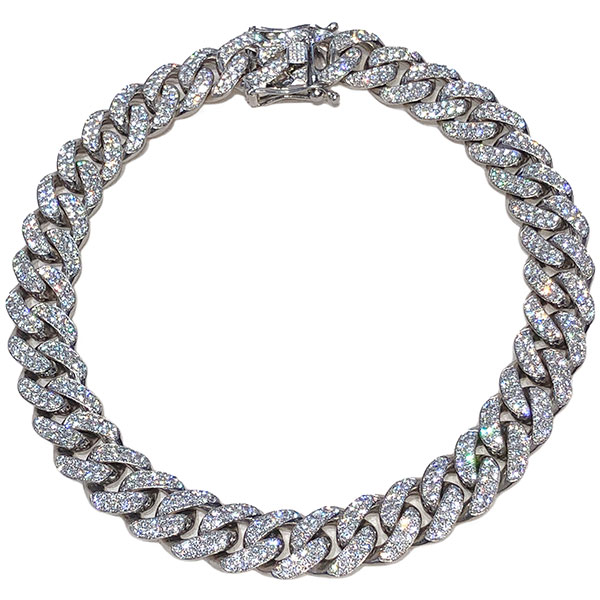
If you’re a direct-to-consumer brand selling supercool certified eco-friendly gold chains via virtual reality, congratulations: you’ve already won 2020
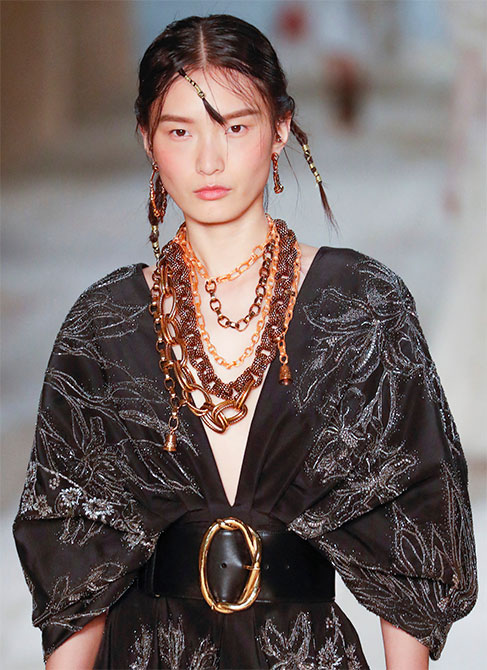 Who’s Got the Chain?
Who’s Got the Chain?
Layered necklaces and designs featuring chains (often tagged #neckmess on Instagram) are among the more-is-more jewelry trends we’re predicting will take flight in the coming year. The spring 2020 fashion runways were full of bold chain pieces, including Marc Jacobs’ waist-length 1970s-inspired medallion necklaces and Alexander McQueen’s mixed-size links (pictured). There was also plenty of piling on: Fashion brand Zimmerman paired necklaces composed of huge ivory-colored curb links with ones crafted from thick shell beads, while designer Brandon Maxwell merrily stacked waist-grazing yellow gold necklaces anchoring gemstone medallions. Fashion always reflects culture—and these bold trends are positively vibrating with feminine power. —Emili Vesilind
(Top) Diamond Cuban Link choker in 18k white gold with 52 cts. t.w. diamonds; $133,400; Jadelle Beverly Hills; 310-721-5151; jadellebh.com
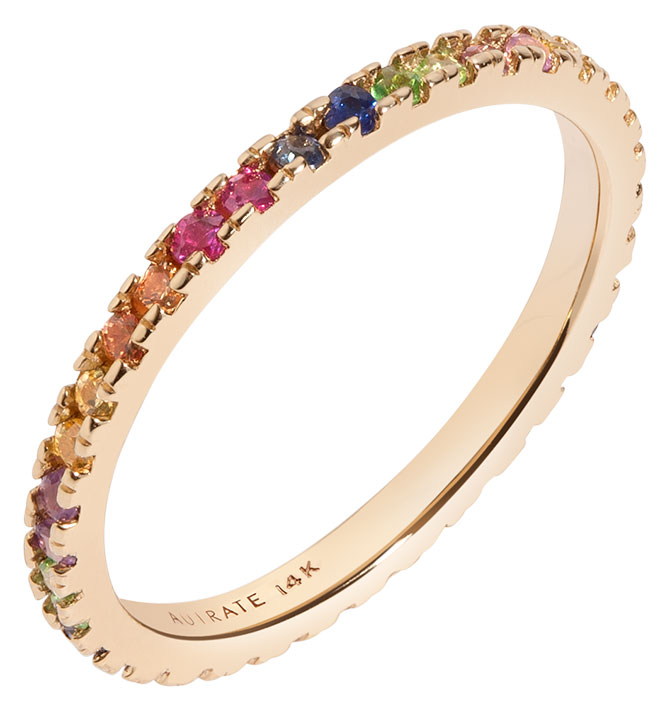 The Direct Route
The Direct Route
In April, Mejuri, a direct-to-consumer brand focused on millennials and self-purchasers and founded just four years ago by third-generation jeweler Noura Sakkijha, raised a tidy $23 million in its second funding round. That’s on top of the $5 million the Toronto-based jeweler raised the year before. Two months later, another jeweler that targets the millennial self-purchase market, AUrate, raised $13 million, building on the $2.6 million it raised at its 2017 launch. Whatever happens with these companies, clearly the investment community sees them as the future of jewelry. Vanessa Larco, partner at New Enterprise Associates, which led the Mejuri round, said in a blog post she believes there’s “room for a modern jewelry brand that appeals to a new generation of consumers, with a modern and fun shopping experience, and that values their opinions.” —Rob Bates
Kaleidoscope Quadricolor ring in 14k gold with 0.01 ct. t.w. multicolored sapphires, amethysts, and tsavorite; $550; auratenewyork.com
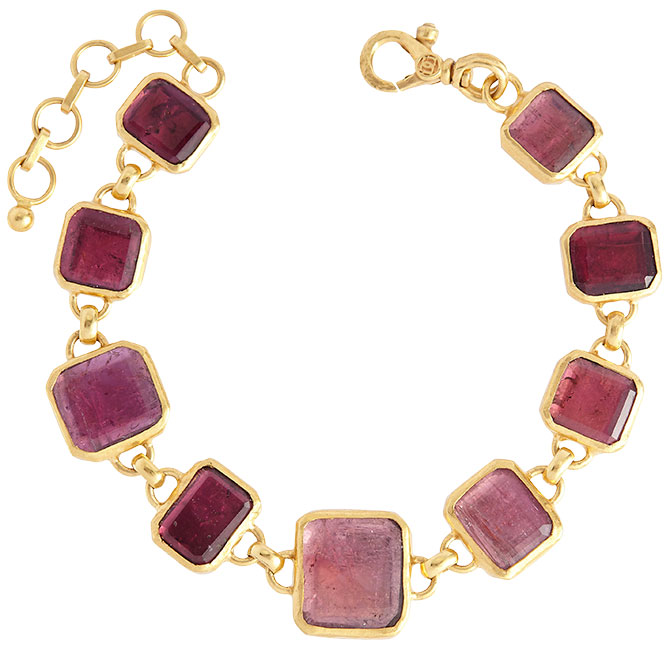 Market Value
Market Value
The industry hasn’t exactly had an easy time wooing millennials, and winning the hearts of their younger siblings in Generation Z may prove even trickier. Jewelers are increasingly looking at how to do that, as evidenced by a new report on the post-millennial generation produced for CIBJO, the World Jewellery Confederation. Report author Jonathan Kendall said Gen Z shoppers—who already spend an estimated $163 billion a year—rank the environment as their No. 1 concern, and some 70% consider sustainability before they make a purchase. They also value authenticity, transparency, diversity, and a personal touch. Plus, they are tough customers. “The more added value, the better,” Kendall said. That “can come from its environmental credentials or its social value.” —RB
Through year-end, Gurhan is giving 25% of profits from its tourmaline jewels (like this one-of-a-kind $10,250 bracelet, above) to Earth Alliance, to help the Amazon rain forest.
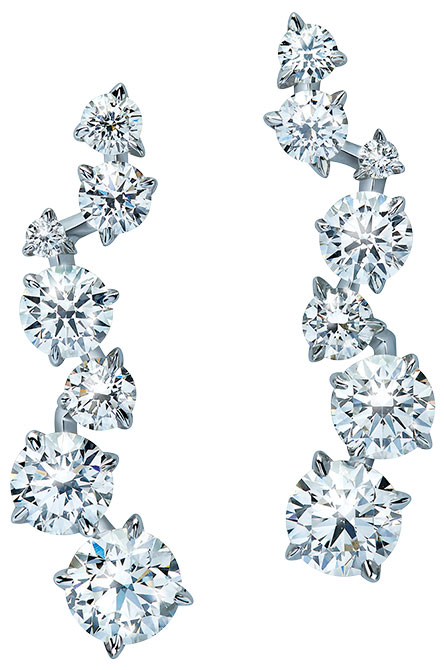 Third-Party System
Third-Party System
The Federal Trade Commission has already said it doesn’t like lab-grown diamond companies calling themselves eco-friendly, and it turns out consumers aren’t crazy about that either. A recent survey by MVI Marketing found that 85% of jewelry purchasers believe that independent third-party verification of chain-of-custody and eco-impact claims is “very important” when they purchase diamonds, be they mined or lab-grown. “The consumer is getting more sophisticated,” says Liz Chatelain, MVI president. “We are starting to see consumer pushback, asking, ‘Who is really confirming and verifying what it is you’re telling me?’ ” —RB
Atelier Swarovski is super-clear that its Diama brand uses lab-created Swarovski Created Diamonds (Signature ear cuffs; $2,490).
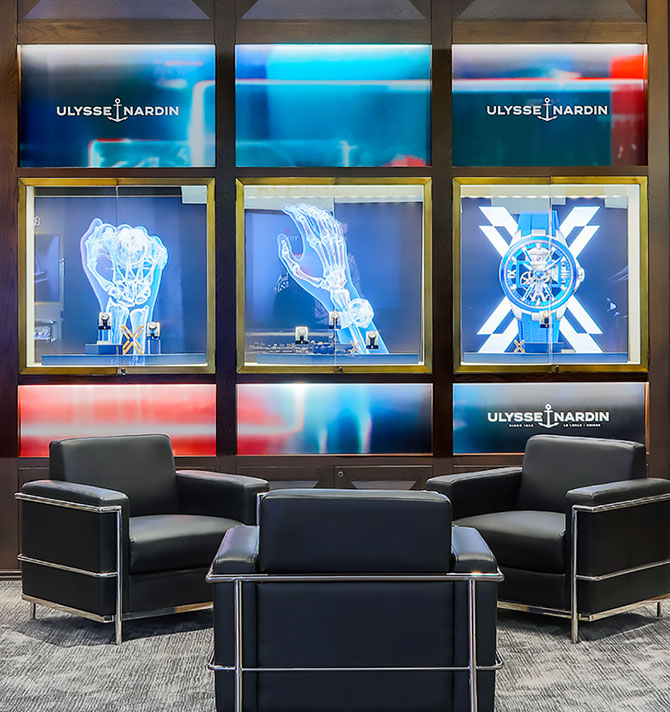 Reality Check
Reality Check
We’ve been talking about augmented reality, virtual reality, and holographic technologies for years, but 2020 will be the year they go mainstream at retail. Luxury watchmakers have already seized the moment. In July, a group of eight Swiss brands owned by the Richemont group—including Cartier, Panerai, and Piaget—banded together to create an experiential pop-up at New York City’s Hudson Yards called Arcadium where the only way to see products was virtually. Both Bulgari and Ulysse Nardin have teamed with authorized retailers—Westime and Watches of Switzerland, respectively—to take clients on virtual tours of their timepieces. And in 2018, Ben Bridge Jeweler debuted holographic technology to allow consumers to visualize its custom-designed Bella Ponte collection and view the pieces on their mobile devices as they’re being made. Says Ben Bridge CEO Lisa Bridge: “It gives them a new perspective on their jewelry and provides a unique journey.” With all roads leading back to the retailer, we presume. —Victoria Gomelsky
The recent Ulysse Nardin augmented- and virtual-reality– powered pop-up at Watches of Switzerland’s SoHo shop